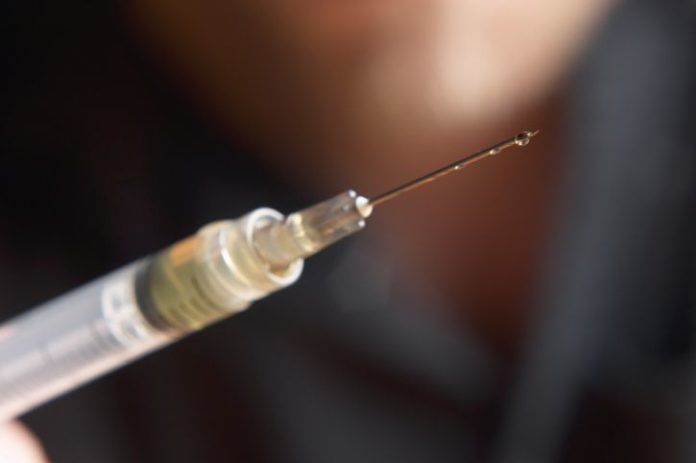An injection of banked sperm-producing stem cells can restore fertility to male primates who become sterile due to cancer drug side effects, according to researchers at the University of Pittsburgh School of Medicine and Magee-Womens Research Institute. In their animal study, which was published today in Cell Stem Cell, previously frozen stem cells restored production of sperm that successfully fertilized eggs to produce early embryos.
Some cancer drugs work by destroying rapidly dividing cells. As it is not possible to discriminate between cancer cells and other rapidly dividing cells in the body, the precursor cells involved in making sperm can be inadvertently wiped out leaving the patient infertile, said senior investigator Kyle Orwig, Ph.D., associate professor, Department of Obstetrics, Gynecology and Reproductive Medicine, Pitt School of Medicine, and an investigator at Magee-Womens Research Institute.
“Men can bank sperm before they have cancer treatment if they hope to have biological children later in their lives,” he said. “But that is not an option for young boys who haven’t gone through puberty, can’t provide a sperm sample, and are many years away from thinking about having babies.”
Even very young boys, though, have spermatogonial stem cells in their testicular tissue that are poised to begin producing sperm during puberty. To see whether it was possible to restore fertility using these cells, Dr. Orwig and his team biopsied the testes of prepubertal and adult male macaque monkeys and cryopreserved the cells from the small samples. The monkeys were then treated with chemotherapy agents known to impair fertility.
A few months after chemotherapy treatment, the team re-introduced each monkey’s own spermatogonial stem cells back in to his testes using an ultrasound-guided technique. Sperm production was established from transplanted cells in nine out of 12 adult animals and three out of five prepubertal animals after they reached maturity.
In another test, spermatogonial stem cells from other unrelated monkeys were transplanted into infertile animals, which created sperm with the DNA fingerprint of the donor to allow easy tracking of their origin. In lab tests, sperm from transplant recipients successfully fertilized 81 eggs, leading to embryos that developed to the morula and blastocyst stages, which are the stages that normally precede implantion in the mother’s uterus. Donor parentage was confirmed in seven of the embryos.
“This study demonstrates that spermatogonial stem cells from higher primates can be frozen and thawed without losing their activity, and that they can be transplanted to produce functional sperm that are able to fertilize eggs and give rise to early embryos,” Dr. Orwig said.
The findings are encouraging because several centers in the U.S. and abroad already are banking testicular tissue for boys in anticipation that new stem cell-based therapies will be available in the future to help them achieve pregnancy and have their own biological children.
“These patients and their families are the pioneers that inspire our research and help drive the development of new medical breakthroughs,” Dr. Orwig said. He directs the Fertility Preservation Program in Pittsburgh, a unique collaboration between Magee-Womens Research Institute, Magee-Womens Hospital of UPMC, Children’s Hospital of Pittsburgh of UPMC, and the University of Pittsburgh Cancer Institute that offers education and treatment options for children as well as adult men and women who are at risk of becoming infertile due to medical problems including cancer.
“Many questions remain to be answered,” Dr. Orwig noted. “Should we re-introduce the spermatogonial cells as soon as treatment is over, or wait until the patient is considered cured of his disease, or when he is ready to start a family? How do we eliminate the risk of cancer recurrence if we give back untreated cells that might include cancer cells? These are issues we still must work through, but this study does show us the concept is feasible.”
- Advertisement -
Date Created: November 15, 2012
Date Modified: November 23, 2012 










